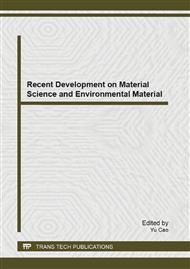[1]
P.K. Fei, Application of azeotropic distillation method in the treatment of wastewater containing chlorobenzene, Henan Chemical Industry. 7(1999)38-39.
Google Scholar
[2]
Z. Liu,Y. Kang, case of treating aniline wastewater by co-boiling distillation method, Industrial Minerals & Processing. 3(2003)33-35.
Google Scholar
[3]
T.M. Zhu, The standard color spectrum for design and printing, Chemical Industry Press, Beijing, 2008, p.27.
Google Scholar
[4]
Y.X. Ling, The guide of practical ink technical, Graphic Communications Press, Beijing, 2007, p.90.
Google Scholar
[5]
Xiong Xiangyu, Data measurement of ink color and Chromatic aberration, Screen Printing. 6(2001)25-30.
Google Scholar
[6]
Y. l. Zhu, Studies on preparation of nano-zro2 with up conversion luminescence and its application in infrared stealth falsification resistant ink. Beijing University of Chemical Technology, Beijing, (2006).
Google Scholar
[7]
Z.W. Chen, Printing and packaging materials and eligibility, Chemical industry press, Beijing, 2010, p.29.
Google Scholar
[8]
J.H. Qian, Technology of ink application, Chemical Industry Press, Beijing, 2010, pp.69-70.
Google Scholar
[9]
M.F. Yan, M. Xu, Research on paper hue and print color reproduction, Packaging engineering. 21(2012)103-106.
Google Scholar


